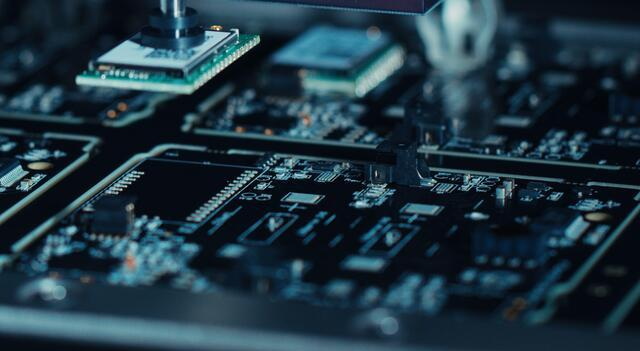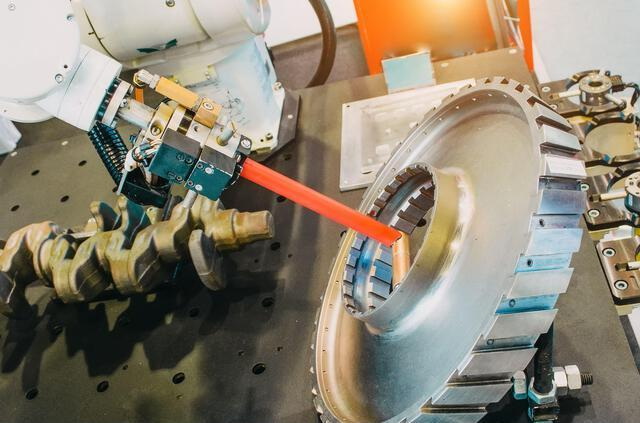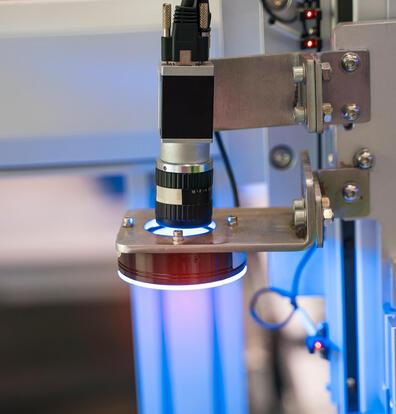Content Menu
● Understanding SMD LED Soldering Automatic Machines
● Common Issues Faced with SMD LED Soldering Automatic Machines
>> 1. Solder Bridging (Electrical Shorts)
>> 2. Solder Balling
>> 3. Dead or Non-Functional LEDs After Soldering
>> 4. Insufficient Wetting and Poor Solder Joint Formation
>> 5. Component Placement and Orientation Errors
>> 6. Heat Conduction Problems in Soldering Fixtures
● Best Practices for Optimizing SMD LED Soldering Automatic Machines
● Conclusion
● FAQ
>> 1. What causes solder bridging in SMD LED soldering automatic machines?
>> 2. How can solder balling be prevented during SMD LED soldering?
>> 3. Why do some SMD LEDs fail after soldering?
>> 4. How to ensure proper wetting in SMD LED solder joints?
>> 5. What role does component placement accuracy play in SMD LED soldering?
● Citations:
Surface Mount Device (SMD) LED soldering automatic machines have revolutionized the electronics manufacturing industry by enabling efficient, precise, and high-volume assembly of SMD LEDs on printed circuit boards (PCBs). Despite their advantages, these machines encounter several common issues that can affect product quality, reliability, and production efficiency. This article explores the typical problems faced with SMD LED soldering automatic machines, their causes, and practical solutions to optimize soldering performance.

Understanding SMD LED Soldering Automatic Machines
SMD LED soldering automatic machines are specialized equipment designed to solder small LED components onto PCBs using surface mount technology (SMT). These machines typically involve processes such as solder paste application, component placement, and reflow soldering, often integrated with automated inspection systems. The goal is to achieve strong, electrically sound, and visually flawless solder joints with minimal manual intervention.
Common Issues Faced with SMD LED Soldering Automatic Machines
1. Solder Bridging (Electrical Shorts)
Description:
Solder bridging occurs when excess solder connects two or more adjacent pads or leads, creating unintended electrical shorts that cause circuit malfunction.
Causes:
- Misalignment of solder paste stencil apertures to PCB pads.
- Excessive solder paste deposition due to large stencil aperture or thick stencil.
- Solder paste slump caused by improper metal-to-flux ratio or moisture contamination.
- Incorrect reflow profile, especially slow preheat ramp rates leading to paste hot slump.
- Placement inaccuracies or excessive pressure during component placement squeezing solder paste out of pads.
Solutions:
- Use solder paste with an appropriate metal-to-flux ratio (typically 90% metal content for fine pitch).
- Optimize stencil design by reducing aperture size or stencil thickness by 10%.
- Ensure precise stencil alignment and component placement accuracy, preferably with automated alignment systems.
- Develop and maintain a proper reflow soldering profile with correct preheat, soak, reflow, and cooling zones.
- Monitor and control environmental factors to prevent moisture absorption in solder paste[1].
2. Solder Balling
Description:
Solder balling refers to the formation of tiny spherical solder particles that separate from the main joint, potentially causing false bridges and reliability issues.
Causes:
- Moisture contamination of solder paste causing solvent evaporation and solder spheres during reflow.
- Improper reflow profile with fast preheat rates not allowing gradual solvent evaporation.
- Excessive oxides on solder powder in solder paste.
- Poor solder paste printing alignment, printing on solder mask instead of pads.
- Smeared solder paste on stencil bottom during printing.
Solutions:
- Use coarser solder powder to reduce oxides and slump tendency.
- Match reflow profile to solder paste specifications.
- Store solder paste properly to avoid moisture exposure.
- Regularly verify print alignment and clean stencil bottom frequently[1].
3. Dead or Non-Functional LEDs After Soldering
Description:
Some LEDs fail to light up or die quickly after soldering, reducing yield and increasing rework.
Causes:
- Excessive heat during soldering damaging the LED chip or gold wire connections.
- Improper grounding or static discharge damaging LEDs.
- Inadequate storage conditions leading to moisture absorption and damage during reflow.
- Chemical cleaning agents damaging LED epoxy or causing cracks.
Solutions:
- Use controlled temperature soldering profiles within LED thermal limits (typically 230-250°C max).
- Implement proper ESD (Electrostatic Discharge) protection and grounding.
- Use moisture barrier bags and consume LEDs quickly after opening.
- Avoid unknown or harsh chemical cleaners on LEDs[5][8].
4. Insufficient Wetting and Poor Solder Joint Formation
Description:
Poor solder joints occur when solder does not flow properly onto pads or component leads, resulting in weak mechanical and electrical connections.
Causes:
- Heating the component lead instead of the PCB pad during soldering.
- Contaminated or oxidized pads and leads.
- Insufficient solder paste or solder wire application.
- Incorrect soldering temperature or technique.
Solutions:
- Heat the PCB pad first to promote solder flow.
- Clean pads and component leads before soldering.
- Apply sufficient solder paste or wire.
- Use correct soldering temperature and duration[4].

5. Component Placement and Orientation Errors
Description:
Incorrect placement or orientation of SMD LEDs leads to malfunction or failure of the assembled board.
Causes:
- Misinterpretation of LED polarity markings.
- Inaccurate placement by machine or operator.
- Component shifting during reflow due to insufficient solder paste tackiness.
Solutions:
- Clearly mark LED polarity on reels and feeders.
- Use automated vision systems for placement verification.
- Optimize solder paste viscosity and printing to hold components firmly before reflow[6][9].
6. Heat Conduction Problems in Soldering Fixtures
Description:
Poor heat conduction in fixtures or brackets can cause uneven heating, resulting in incomplete soldering or thermal damage.
Causes:
- Use of low thermal conductivity materials in fixtures.
- Improper thermal design of heating platforms.
Solutions:
- Employ high thermal conductivity materials for fixtures.
- Design heating profiles and fixtures for uniform heat distribution[5].
Best Practices for Optimizing SMD LED Soldering Automatic Machines
- Maintain controlled humidity and temperature in the manufacturing environment to protect solder paste and components.
- Regularly calibrate and maintain stencil printers, pick-and-place machines, and reflow ovens.
- Use solder paste and flux compatible with LED materials and reflow profiles.
- Implement inline inspection and testing to detect defects early.
- Train operators and engineers on SMT process parameters and troubleshooting.
Conclusion
SMD LED soldering automatic machines are essential for modern electronics manufacturing, but they face common challenges such as solder bridging, solder balling, dead LEDs, poor wetting, placement errors, and heat conduction issues. Understanding the root causes of these problems and applying targeted solutions—such as optimizing solder paste characteristics, refining reflow profiles, ensuring precise component placement, and protecting LEDs from thermal and moisture damage—can significantly improve soldering quality and production efficiency. Adopting best practices and continuous process monitoring ensures reliable, high-quality SMD LED assemblies.

FAQ
1. What causes solder bridging in SMD LED soldering automatic machines?
Solder bridging is mainly caused by excessive solder paste deposition, misaligned stencil apertures, improper solder paste metal-to-flux ratio, and incorrect reflow profiles leading to solder paste slump[1].
2. How can solder balling be prevented during SMD LED soldering?
Prevent solder balling by using coarser solder powder, controlling moisture exposure of solder paste, optimizing reflow profiles for gradual solvent evaporation, and ensuring accurate solder paste printing and stencil cleaning[1].
3. Why do some SMD LEDs fail after soldering?
Failures often result from excessive heat damaging the LED chip or gold wires, static discharge, moisture absorption during storage, or harsh chemical cleaning[5][8].
4. How to ensure proper wetting in SMD LED solder joints?
Heat the PCB pad first, clean pads and leads, apply sufficient solder paste, and use correct soldering temperature and technique to promote good solder flow and joint formation[4].
5. What role does component placement accuracy play in SMD LED soldering?
Accurate placement and correct orientation are critical to avoid malfunction. Automated vision systems and proper solder paste viscosity help maintain correct component positioning before reflow[6][9].
Citations:
[1] https://www.protoexpress.com/blog/common-errors-surface-mount-technology-smt/
[2] https://forum.arduino.cc/t/soldering-plcc6-smd-leds-without-damage/668040
[3] https://www.reddit.com/r/AskElectronics/comments/mkxpc4/how_to_hand_solder_a_smd_led_without_killing_it/
[4] https://learn.adafruit.com/adafruit-guide-excellent-soldering/common-problems
[5] https://www.gmleds.com/info/7-common-problems-and-solutions-of-smd-led-chi-63204474.html
[6] https://homemadehardware.com/guides/smd-soldering/
[7] https://www.instructables.com/SMD-SOLDERING-101-USING-HOT-PLATE-HOT-AIR-BLOWER-S/
[8] https://electronics.stackexchange.com/questions/486654/smd-led-went-out-quickly-after-i-soldered-it
[9] https://www.reddit.com/r/ErgoMechKeyboards/comments/16wgtkf/how_do_you_solder_smd_leds/
[10] https://www.instructables.com/How-to-Solder-SMD-/
[11] https://www.instructables.com/How-to-Solder-SMD-SMT-Components-With-a-Soldering-/




















